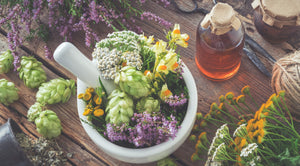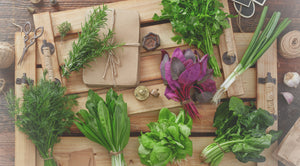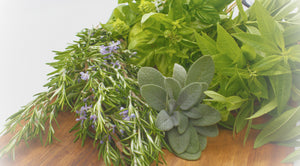Fragrant plants are among the most prized botanicals and are widely cultivated all over the world. Of all the aromatic plants and herbs, lemongrass is one of the oldest and best loved. It has a range of benefits that medicinal and culinary herb gardeners should know about. Any gardener interested in adding some excitement to a vegetable garden should take a closer look at what lemongrass has to offer. Gardeners wishing to cultivate fragrant plants, ornamental grasses, or landscape plants should also be aware of the exciting possibilities lemongrass opens up.
Lemongrass grows best in zones 8 and warmer, though it can be cultivated in greenhouses and other climate controlled environments. It can also be grown indoors. This plant likes full sun though care must be taken not to allow the soil to dry out. A water mister will help maintain optimal soil moisture levels without water-logging the plant or its roots. Clay-rich soils will impede the draining action required to keep the plant surrounded by an optimal moisture level. Some all-purpose fertilizer, fish emulsion, or liquid plant food can be added to the soil surrounding your lemongrass plants every two weeks or so throughout the growing season.
 You can begin harvesting lemongrass as soon as the plant is well enough established to tolerate a few stalks being cut. Tender stalks can be gently snipped near the base though longer, tougher stalks should be harvested together in clumps that are dug up and separated from the rest of the plant. Prepared portions of these longs stalks can be found in grocery stores with extensive produce sections and shops specializing in Asian foods.
You can begin harvesting lemongrass as soon as the plant is well enough established to tolerate a few stalks being cut. Tender stalks can be gently snipped near the base though longer, tougher stalks should be harvested together in clumps that are dug up and separated from the rest of the plant. Prepared portions of these longs stalks can be found in grocery stores with extensive produce sections and shops specializing in Asian foods.
To prepare your harvested lemongrass, begin by cutting down the tough tops of the stalk until you have several inches of softer, lighter colored plant matter near the base of the plant. The root fibers can also be trimmed though a few roots near the base of the plant can be retained to keep the stalk fresh in a glass of water. You can retain all portions of the stalk that are close together; stalks that have separated into individual blades can be cut. Once the harvested stalks have been trimmed, carefully rinse all dirt and grit from the surface and pat dry. These prepared stalks can be stored in the produce drawer of your refrigerator for one to two weeks. The taller grass-like portions of the plant can be added to vases of flowers for a dramatic and lightly fragrant addition.
You can also freeze your lemongrass harvest to preserve it for future use. To do this, take the rinsed, dried prepared stalks and use a sharp knife to cut the stalk into slices 1/4 to 1/2 inch thick. Collect these round slices into a freezer bag and freeze. Your lemongrass will remain fresh tasting for up to a year.
You will need:
Garnish: Sprigs of fresh cilantro, fresh bean sprouts, chopped peanuts
Optional: 2 Tbsp vegetarian fish sauce
To prepare this dish, heat the oil in a large stock pot over medium heat. Saute shallots and onions until translucent. Add ginger, garlic, lemongrass, and curry powder. Cook for five minutes, stirring frequently to combine flavors. Stir in carrots, bell pepper, mushrooms, and tofu; try to avoid breaking the tofu when stirring mixture together. Add water and vegetable stock to the pot, along with red pepper flakes, lime leaves, bay leaf, and vegetarian fish sauce (if using). Cover and bring mixture to a boil, then stir in potatoes and coconut milk. Once the curry is boiling again, reduce the heat and simmer, covered, around 40 minutes or until potatoes are tender. Serve over white or brown rice and garnish with cilantro, bean sprouts, and peanuts.
You will need:
Heat oil in stock pot over medium heat. Cook onion, garlic, and ginger until onions are soft. Stir in red pepper and cumin, cooking until spices are lightly toasted (1 - 2 minutes). Next add the soup base, water, coconut milk, and pumpkin. Stir until a smooth, even mixture forms. Allow soup to heat thoroughly (5 - 10 minutes). Taste for flavor and add salt and pepper to finish dish. Serve hot immediately or use an immersion blender to create a smoother dish; allow soup to reheat before serving.
 Though lemongrass stalks are trimmed down to give access to the softer portions near the root, the long blades can still be retained for use. One traditional way of using lemongrass is in a hot steeped beverage. Even though we might refer to this drink as a tea, technically it is a tisane. Tea beverages are specifically those that contain leaves from the tea plant. A soothing lemongrass tisane can be made with fresh or preserved plant material.
Though lemongrass stalks are trimmed down to give access to the softer portions near the root, the long blades can still be retained for use. One traditional way of using lemongrass is in a hot steeped beverage. Even though we might refer to this drink as a tea, technically it is a tisane. Tea beverages are specifically those that contain leaves from the tea plant. A soothing lemongrass tisane can be made with fresh or preserved plant material.
To prepare lemongrass tea, fill a kettle or saucepan with water and heat till nearly boiling. While the water is heating, chop lemongrass into portions pieces approximately one inch long. When the water is ready, add lemongrass pieces to the water or place the lemongrass into a teapot or other brewing container and pour the hot water over it. Let your tisane steep for five to ten minutes, or until it has reached your preferred strength. Remove the stalks with a slotted spoons or pour the preparation through a strainer to remove all plant material before serving.
This bright, zesty beverage can be enjoyed as is or sweetened with a little honey, sugar, or agave nectar. A lemongrass tisane can be enjoyed first thing in the morning for a natural pick-me-up or any time you want a warm boost. You can also add a little chopped lemongrass to any of your favorite herbal tisane beverages. Lemongrass blends very well with fruit flavors, mint, and other mildly sweet herbs.
Botanical Basics of Lemongrass
Like many of the other species grouped into the Cymbopogon genus, lemongrass is native to the temperate, warm, and tropical regions of Oceania, the Indian subcontinent, and Southeast Asia. It is a tall, bushy, perennial grass that grows up from a tightly packed central clump. Each plant can reach three to five feet in height, which makes it a dramatic landscape plant. Pests are unlikely to trouble lemongrass and your plants will flourish so long as the weather is warm enough.Lemongrass grows best in zones 8 and warmer, though it can be cultivated in greenhouses and other climate controlled environments. It can also be grown indoors. This plant likes full sun though care must be taken not to allow the soil to dry out. A water mister will help maintain optimal soil moisture levels without water-logging the plant or its roots. Clay-rich soils will impede the draining action required to keep the plant surrounded by an optimal moisture level. Some all-purpose fertilizer, fish emulsion, or liquid plant food can be added to the soil surrounding your lemongrass plants every two weeks or so throughout the growing season.
Six Steps to Wintering Your Lemongrass Indoors
You can winter your lemongrass by bringing it inside until temperatures return to above 40 degrees F. To prepare them for winter and spring, just follow these steps:- Trim grass till stalks are just a few inches high.
- Use a spade or trowel to separate several stalks away from the central clump.
- Place these stalks into several pots prepared with soil.
- Keep potted plant soil lightly moist.
- Return the potted plants to a sunny location as weather warms.
- Replant your lemongrass once the temperature has risen sufficiently.
Preserving Lemongrass Roots
Another easy way of preserving your lemongrass plants is to winter the roots in a cellar, basement, or other dark cool location. Once the stalks have been cut down and repotted, all you need to do is lightly water the soil to keep the roots alive. Only a little water is necessary and your plants will require watering just a few times throughout the season. After the temperature has risen in spring, the stalks and roots can be planted wherever you would like a clump of lemongrass to grow.Harvesting Lemongrass
 You can begin harvesting lemongrass as soon as the plant is well enough established to tolerate a few stalks being cut. Tender stalks can be gently snipped near the base though longer, tougher stalks should be harvested together in clumps that are dug up and separated from the rest of the plant. Prepared portions of these longs stalks can be found in grocery stores with extensive produce sections and shops specializing in Asian foods.
You can begin harvesting lemongrass as soon as the plant is well enough established to tolerate a few stalks being cut. Tender stalks can be gently snipped near the base though longer, tougher stalks should be harvested together in clumps that are dug up and separated from the rest of the plant. Prepared portions of these longs stalks can be found in grocery stores with extensive produce sections and shops specializing in Asian foods.To prepare your harvested lemongrass, begin by cutting down the tough tops of the stalk until you have several inches of softer, lighter colored plant matter near the base of the plant. The root fibers can also be trimmed though a few roots near the base of the plant can be retained to keep the stalk fresh in a glass of water. You can retain all portions of the stalk that are close together; stalks that have separated into individual blades can be cut. Once the harvested stalks have been trimmed, carefully rinse all dirt and grit from the surface and pat dry. These prepared stalks can be stored in the produce drawer of your refrigerator for one to two weeks. The taller grass-like portions of the plant can be added to vases of flowers for a dramatic and lightly fragrant addition.
You can also freeze your lemongrass harvest to preserve it for future use. To do this, take the rinsed, dried prepared stalks and use a sharp knife to cut the stalk into slices 1/4 to 1/2 inch thick. Collect these round slices into a freezer bag and freeze. Your lemongrass will remain fresh tasting for up to a year.
Using Lemongrass in the Kitchen
Vietnamese Style Lemongrass Soup
Though lemongrass plants have been celebrated for their showy ornamental quality, it is best known as a culinary ingredient in the traditional foods of Southeast Asia. As the name suggestions, lemongrass has a light lemony flavor that it easily imparts to soup, stir fried dishes, curries, and other foods. This simple Vietnamese style soup has loads of flavor and color. Serve this festive dish at home, take it to a potluck, or serve it when entertaining guests.You will need:
- 2 Tbsp vegetable oil
- 2 thinly sliced shallots
- 1 chopped onion
- 2 inch piece of ginger, minced
- 2 garlic cloves, minced
- 1 lemongrass stalk, sliced into two inch pieces
- 4 Tbsp curry powder (mild, medium, or hot as you prefer)
- 2 peeled carrots cut into diagonal slices
- 1 green bell pepper, chopped
- 8 - 10 sliced button mushrooms
- 1 lb tofu, cut into bite sized pieces
- 4 cups water
- 4 cups vegetable broth
- 2 tsp red pepper flakes
- 2 kaffir lime leaves
- 1 bay leaf
- 8 small potatoes cut in quarters
- 1 14 ounce can of coconut milk (regular or light)
Garnish: Sprigs of fresh cilantro, fresh bean sprouts, chopped peanuts
Optional: 2 Tbsp vegetarian fish sauce
To prepare this dish, heat the oil in a large stock pot over medium heat. Saute shallots and onions until translucent. Add ginger, garlic, lemongrass, and curry powder. Cook for five minutes, stirring frequently to combine flavors. Stir in carrots, bell pepper, mushrooms, and tofu; try to avoid breaking the tofu when stirring mixture together. Add water and vegetable stock to the pot, along with red pepper flakes, lime leaves, bay leaf, and vegetarian fish sauce (if using). Cover and bring mixture to a boil, then stir in potatoes and coconut milk. Once the curry is boiling again, reduce the heat and simmer, covered, around 40 minutes or until potatoes are tender. Serve over white or brown rice and garnish with cilantro, bean sprouts, and peanuts.
Spicy Coconut and Pumpkin Soup
Lemongrass complements the rich flavors of coconut and pumpkin in this rich soup. This recipe is a great way to serve up the flavors of summertime in winter when you crave a warm, satisfying meal. Though full fat coconut milk can be used, the light variety brings all the same flavor and texture without the extra calories.You will need:
- 1 Tbsp vegetable oil or olive oil
- 1 medium yellow onion, chopped
- 2 - 3 garlic cloves, minced
- 1 inch of fresh ginger, minced
- 1/2 tsp crushed red pepper flakes
- 1 tsp cumin powder
- 1 Tbsp vegetable soup base or bouillon granules
- 3 cups water
- 1 14 ounce can of light coconut milk
- 1 15 ounce can of pumpkin puree
- Salt and pepper to taste
Heat oil in stock pot over medium heat. Cook onion, garlic, and ginger until onions are soft. Stir in red pepper and cumin, cooking until spices are lightly toasted (1 - 2 minutes). Next add the soup base, water, coconut milk, and pumpkin. Stir until a smooth, even mixture forms. Allow soup to heat thoroughly (5 - 10 minutes). Taste for flavor and add salt and pepper to finish dish. Serve hot immediately or use an immersion blender to create a smoother dish; allow soup to reheat before serving.
A Refreshing Hot Lemongrass Tea / Tisane
 Though lemongrass stalks are trimmed down to give access to the softer portions near the root, the long blades can still be retained for use. One traditional way of using lemongrass is in a hot steeped beverage. Even though we might refer to this drink as a tea, technically it is a tisane. Tea beverages are specifically those that contain leaves from the tea plant. A soothing lemongrass tisane can be made with fresh or preserved plant material.
Though lemongrass stalks are trimmed down to give access to the softer portions near the root, the long blades can still be retained for use. One traditional way of using lemongrass is in a hot steeped beverage. Even though we might refer to this drink as a tea, technically it is a tisane. Tea beverages are specifically those that contain leaves from the tea plant. A soothing lemongrass tisane can be made with fresh or preserved plant material.To prepare lemongrass tea, fill a kettle or saucepan with water and heat till nearly boiling. While the water is heating, chop lemongrass into portions pieces approximately one inch long. When the water is ready, add lemongrass pieces to the water or place the lemongrass into a teapot or other brewing container and pour the hot water over it. Let your tisane steep for five to ten minutes, or until it has reached your preferred strength. Remove the stalks with a slotted spoons or pour the preparation through a strainer to remove all plant material before serving.
This bright, zesty beverage can be enjoyed as is or sweetened with a little honey, sugar, or agave nectar. A lemongrass tisane can be enjoyed first thing in the morning for a natural pick-me-up or any time you want a warm boost. You can also add a little chopped lemongrass to any of your favorite herbal tisane beverages. Lemongrass blends very well with fruit flavors, mint, and other mildly sweet herbs.





